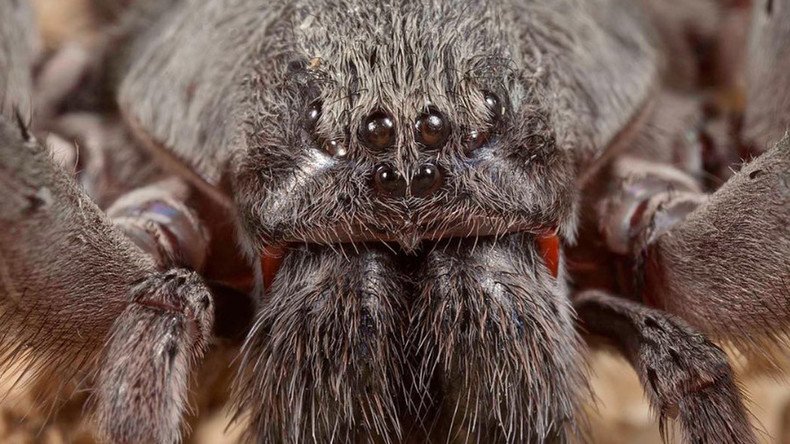New species of terrifying giant spider discovered in Mexican cave (PHOTOS)

An international team of scientists has discovered a new species of wandering spider in the caves of Mexico.
But don’t panic – the cave-dweller discovered in the Baja California region is relatively harmless to humans.
"In all my experience over the years collecting spiders on the peninsula, I had never seen a spider this large," Maria Luisa Jimenez, a spider expert and researcher at the Centro de Investigaciones Biológicas del Noroeste, Mexico said in a statement, as cited by Live Science.
The Sierra Cacachilas chases its prey down in the dark, a scary prospect for any spelunkers planning a trip to Mexico.
The dark brown spider’s eight eyes are arranged in three rows with two on top and two parallel rows of three below, a well-known feature of the Ctenidae family of arachnids. While it appears that the spider has two large, crimson fangs, these are merely imitations known as condyles.
READ MORE: ‘If spiders make you squeamish, don't press play’: Man finds freaky arachnid nest (VIDEO)
The spiders also have a signature, dirty yellow opistosomas (a spider’s equivalent of a butt). Of the specimens studied so far, the arachnid’s body length can reach up to an inch (27mm) while the entire span of the spider is about the size of a softball (3.82 inches) or roughly 1.5 times the size of the average tennis ball.
Think everything ⚾-sized is already known to science? Tell that to this guy—a new species (& genus!) ID’d in CA mine https://t.co/IBPVO3DAUUpic.twitter.com/yLy5dQalvp
— CA AcademyOfSciences (@calacademy) April 7, 2017
While its Brazilian cousin (Phoneutria fera) allegedly induces painful, hours-long erections in humans, the Mexican spider is harmless to us.
Brazilian wandering spider
"I got bit while handling a live specimen of Califorctenus cacachilensis and I'm still alive," Jim Berrian, a field entomologist at the San Diego Natural History Museum said in a statement.
"We haven't analyzed the toxicity of the venom...most wandering spiders are not as dangerous as the Brazilian wandering spider,” Berrian added.











